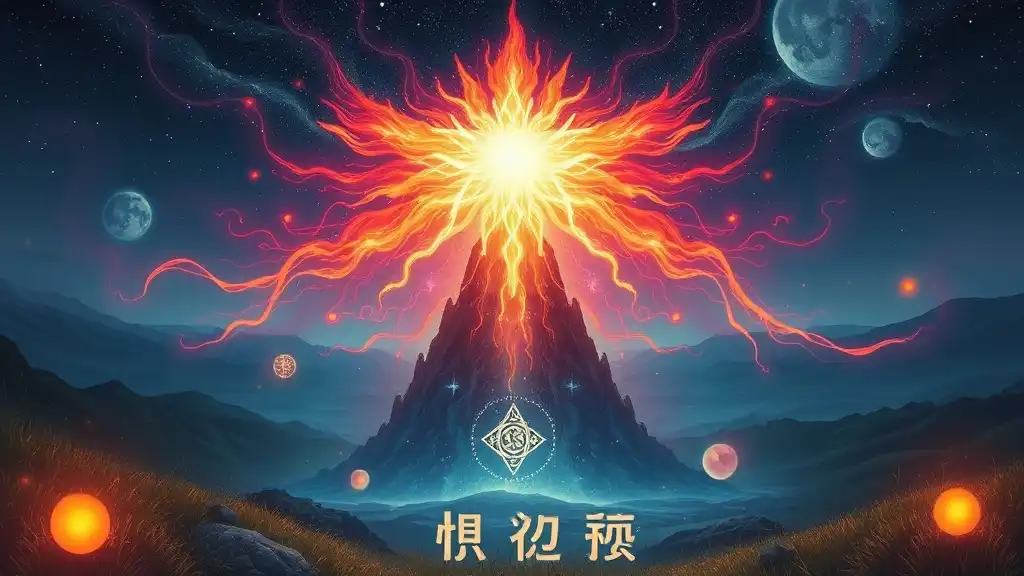Trance is a fascinating phenomenon that transcends cultures and epochs, offering a pathway to deeper spiritual understanding and personal transformation. At its core, trance represents a unique state of consciousness that allows individuals to journey beyond the limitations of the mind and body. By delving into the spiritual meaning of trance, we can unearth profound insights that inform our practices and enhance our spiritual journeys.
What is Trance?
In a spiritual context, trance can be defined as an altered state of consciousness characterized by focused attention, enhanced receptivity, and deep introspection. This state can be intentionally induced through various practices or naturally experienced during moments of contemplation or heightened emotional states. Unlike mere relaxation or daydreaming, trance often leads to profound insights and experiences that reshape one’s understanding of self and the universe.
It is crucial to differentiate trance states from other altered states of consciousness, such as sleep or typical meditation. While these states may involve relaxation or distraction from the external environment, trance is defined by its capacity to facilitate spiritual exploration and deep inner work.

Historical Perspectives on Trance
Trance has roots in ancient spiritual practices, often regarded as a sacred state that bridges the mundane and the divine. Indigenous cultures, especially those employing shamanic traditions, have long acknowledged the power of trance to connect with their spiritual realms. Shamans enter trance states to summon wisdom from spirits, heal the sick, and communicate with ancestors.
Throughout history, many religions have utilized trance-like states in ceremonies ranging from ecstatic worship to contemplative prayer. The rich tapestry of historical uses of trance illustrates its significance across cultures and time, serving humanity's need for connection, healing, and insight.
Modern Interpretations of Trance
In contemporary spirituality, trance continues to be redefined and adapted. With the introduction of various healing modalities and modern psychological practices, the understanding of trance has expanded. This evolution emphasizes the importance of self-exploration in the pursuit of spiritual awakening, urging individuals to reclaim trance as a valuable tool in their spiritual toolkit.

Types of Trance
Meditative Trance
Meditative trance is perhaps the most recognized form in modern spiritual practices. Characterized by a profound sense of presence and deep stillness, it enables practitioners to access layers of awareness previously obscured by everyday distractions. This trance state not only enhances spiritual growth but also cultivates emotional stability, creating a fertile ground for personal insights.
Shamanic Trance
In shamanic traditions, trance serves as a vital conduit for connecting with the spirit world. Through intentional practices, shamans achieve a deeply altered state, allowing them to journey beyond the physical realm. Techniques such as drum rhythms or chanting can facilitate these experiences, enabling practitioners to navigate dimensions filled with spiritual guidance and wisdom.
Hypnotic Trance
Hypnotic trance is another intriguing avenue for spiritual exploration. This method often involves guided suggestion to help individuals access subconscious layers of thought and emotion. While primarily used in therapeutic settings, hypnotic trance can yield rich spiritual insights, revealing hidden beliefs and patterns that impede personal growth.

Spiritual Significance of Trance
Trance holds immense spiritual significance, acting as a gateway to higher consciousness. When in a trance state, individuals often experience a heightened connection to their intuition and inner wisdom—a key factor in spiritual development. This deep connection allows for a journey into the subconscious mind, where individuals can confront and release limiting beliefs, paving the way for transformation and healing.

Techniques to Achieve Trance States
Meditative Practices
One of the most effective ways to achieve trance is through meditation practices. Guided meditation, where one is led through relaxing visualizations, can create a smooth pathway into trance. Here, individuals find themselves enveloped in tranquility, enabling access to profound insights. Breathwork, combined with mindful visualization, can also induce trance states, helping practitioners unlock their spiritual potential.
Rhythmic Drumming and Music
The role of sound in inducing trance cannot be overstated. The rhythmic patterns of drumming or specific melodies can shift brainwave patterns, facilitating a transition into trance. Musical traditions from various cultures harness this principle, inviting their listeners to journey into altered states of awareness.
Movement and Dance
In many spiritual traditions, movement and dance are integral to reaching trance states. Whether it’s the whirling dervishes or the ecstatic dances of indigenous tribes, these practices demonstrate the power of physical expression as a means to connect with the divine. Modern practices, such as ecstatic dance or free movement, echo these traditions, allowing individuals to tap into deeper dimensions of their spirituality.

The Benefits of Trance for Spiritual Development
Engaging with trance not only enhances spiritual experiences but brings numerous benefits as well. Intuition and inner guidance can become clearer, allowing individuals to navigate life with greater ease and confidence. Trance encourages self-awareness and mindfulness, as practitioners learn to observe their thoughts and feelings without judgment.
Moreover, trance can serve as a powerful avenue for emotional healing and release. By unlocking repressed emotions and addressing core beliefs, individuals can experience profound shifts that catalyze transformation.

Trance in Contemporary Spirituality
In recent years, the practice of trance has witnessed significant growth, particularly within yoga and wellness communities. As people seek deeper connections to their spiritual selves, many workshops and retreats emphasize trance induction techniques, exploring ancient wisdom through modern lenses. This integration fosters a revival of practices that can be deeply healing and transformative.

Challenges and Risks of Trance
Despite the myriad benefits, there are potential challenges and risks associated with trance. Misuse of trance states can pose dangers, particularly when individuals navigate deep emotional waters without proper support or guidance. It’s essential to approach trance with respect, ensuring a clear intention is set and grounding practices are in place. This framework serves to protect and enhance the experience, leading to more profound insights and growth.

Conclusion
The spiritual meaning of trance is both profound and multifaceted, offering a gateway to the higher realms of consciousness, personal transformation, and healing. By exploring the techniques, benefits, and deeper significance of trance, you are invited to embark on your own journey into self-exploration and spiritual connection. Embrace this sacred tool, and may it guide you towards a richer, more fulfilling spiritual life.



















